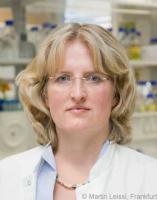Article,
Phyllosphere bacterial communities of trichome-bearing and trichomeless Arabidopsis thaliana leaves
Antonie van Leeuwenhoek, 101 (3): 551-60 (2012)
Abstract
This study aimed to investigate whether the presence of trichomes as conspicuous physical attributes of the leaf surface affects the microbial community composition on Arabidopsis thaliana leaves. The A. thaliana ecotype Col-0 and its trichomeless gl1 mutant were grown in growth cabinets under climate-controlled conditions. The gl1 mutant showed a similar wax composition as the Col-0 wild type with slightly reduced amounts of C(29), C(31) and C(33) alkanes by GC/MS and GC/FID analyses. 120 bacterial isolates representing 39 bacterial genera were obtained from A. thaliana Col-0 leaf surfaces. Phylogenetic analysis of nearly full-length 16S rRNA sequences from 29 selected isolates confirmed their affiliation to the Proteobacteria (Alpha-, Beta-, Gamma-), Actinobacteria, Bacteroidetes and Firmicutes. The bacterial diversity on A. thaliana ecotype Col-0 and its gl1 mutant, devoid of trichomes, were further compared by denaturing gradient gel electrophoresis (DGGE). Banding patterns and sequencing of representative DGGE bands revealed the presence of phylotypes related to Sphingomonas (Alphaproteobacteria), Methylophilus (Betaproteobacteria) and Dyadobacter (Bacteroidetes) which are common phyllosphere inhabitants. Furthermore, wildtype and trichomeless mutant plants were exposed to outdoor conditions for 4-5weeks. The DGGE gels showed only minor differences between the two plant lines, thus suggesting that trichomes per se do not affect bacterial diversity on Arabidopsis leaves under the experimental conditions tested.



